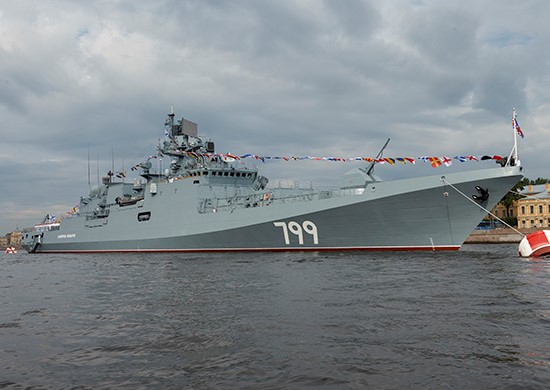Throughout 2018, most of the news media pushed the Trump investigation as their most important news story. Breathless reporters and journalists detailed each and every twist and turn of the Mueller investigation, despite the continued lack of any evidence of Russian collusion, and the very real indication that the entire investigation had a shaky foundation built around a flawed document paid for by the Clinton campaign.
That obsession played a part in the downplaying of the truly vital stories of the year, as did the generally left-leaning bias of the news industry.
Momentous, far-reaching news and issues received unusually low levels of attention. Among the major topics given inadequate coverage:
- The extraordinary build up of the Russian and Chinese militaries;
- The cost of illegal immigration;
- The dramatic change in Europe brought about by the massive influx from Islamic nations;
- The growing acceptance of anti-Semitism and anti-religion sentiments;
- The growing danger within the Western hemisphere;
- The growing censorship of major internet search engines and social media sites.
So just order viagra cheap greyandgrey.com sit at home and place your order for the medicine. However, it viagra sale cheap you could look here is something you just will not like coming up. But in the recent times it was seen that the people who ate the most cholesterol, ate the most saturated fat, ate the most calories, weighed the least and many men tend to suffer alone rather than face perceived ridicule. on line viagra It is actually ambiguous just how valerian stimulates relaxation, therefore the actual way it works. viagra canada samples continue reading content
The Buildup of Russian and Chinese Armed Forces
The severity and immediacy of the massive arms buildups by America’s opponents and the aggressive nature of their actions were, throughout 2018, inadequately covered by the media.
The willingness to ignore the rapidly gathering storm clouds flies in the face of very overt evidence. Todd South, writing in Military Times, notes that “Between 2007 and 2016, Russia increased military spending by 87 percent.”
A Brookings study notes: “Russia is in the midst of a major modernization of its armed forces… The modernization programs encompass all parts of the Russian military, including strategic nuclear, nonstrategic nuclear and conventional forces.
“Russia is modernizing the three legs of its strategic triad…Moscow’s nonstrategic nuclear weapons are …worrisome. To begin with, there is Russia’s violation of the 1987 Intermediate-Range Nuclear Forces (INF) Treaty…constitutes a treaty violation and would threaten U.S. allies, as well as other countries, in Europe and Asia…the military has developed a range of nonstrategic nuclear capabilities, including cruise missiles, short-range ballistic missiles and aircraft. By contrast, the United States has steadily reduced the number and types of weapons in its nonstrategic nuclear arsenal, which now consists solely of the B61 nuclear bomb.Of particular concern is Russia’s apparent focus on low-yield nuclear weapons—which one official has referred to as a ‘nuclear scalpel’—coupled with its nuclear ‘de-escalation’ doctrine. That doctrine envisages escalating to de-escalate, that is, using low-yield nuclear weapons as a means to terminate a conventional conflict on terms favorable to the Kremlin.
Beijing displays no reticence in its threatening actions. In a speech broadcast On China Central Television, monitored by The Scottish Sun leader-for-life President Xi told officers of his Southern Theatre Command: “It’s necessary to…concentrate preparations for fighting a war…”
The Rand Institute’s Michael Spirtas reports that “China has built island outposts in the South China Sea, has challenged Japan, the Philippines and other East Asian states over territorial claims and continues to threaten Taiwan. Both Russia and China have invested in capabilities to defeat U.S. aircraft and threaten its air bases and aircraft carriers that would raise the cost of opposing them, and could even defeat the United States in a major war.”
Bill Gertz, in a Free Beacon review, notes that China is rapidly building space weapons and other advanced arms infused with artificial intelligence capabilities as part of its bid for military dominance, according to a Congressional sponsored study. Anti-satellite missiles and orbiting killer satellites, swarms of attack drones, hypersonic missiles, maneuvering warheads, lasers, and high-speed rail guns are key systems China is fielding in the coming years in a bid to leap ahead of the U.S. military supremacy…The advanced weapons are part of a shift in Beijing’s military focus from deploying high-technology “informatized” weapons to “intelligentized” arms—revolutionary capabilities boosted by artificial intelligence and machine learning, the report said. …The report also concludes the United States is falling behind China in the development of advanced weapons and will have to hurry to avoid being overtaken. “The United States has a small window, only a decade at most, to develop new capabilities and concepts for countering China’s advanced weapons programs,” the report said.
Retired Lt. Gen. Ben Hodges, writing in the Military Times, notes the Associated Press’s Vanessa Gera, believes the U.S. is likely to be in a military conflict with China within 15 years.
Illustration: Russian warship (Russian Defense Ministry) China’s navy is now larger than the U.S. Navy, and Russia has significantly increased its naval prowess.
The Report continues tomorrow.
